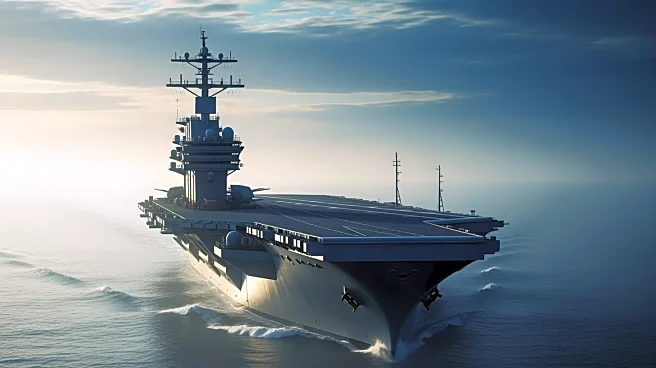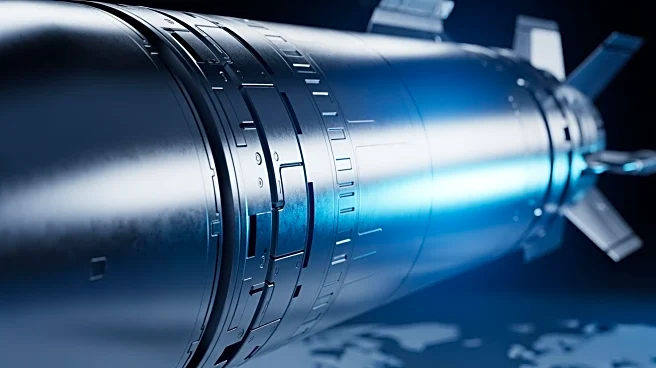What's Happening?
China is reportedly advancing the construction of its first nuclear-powered aircraft carrier, known as Type 004, according to recent analyses by The War Zone. The carrier is expected to feature nuclear propulsion,
allowing it to remain at sea longer and power advanced systems with minimal refueling needs. This development comes as China continues to expand its naval capabilities, having already commissioned the Fujian, its first domestically produced advanced-generation aircraft carrier. The leaked images suggest a reactor containment structure similar to those found on U.S. nuclear-powered supercarriers, although conclusive evidence is still pending. Analysts have noted the presence of large circular steel structures on the ship's upper deck, interpreted as reactor pressure vessel covers, indicating significant progress in the carrier's construction.
Why It's Important?
The construction of a nuclear-powered aircraft carrier by China represents a significant shift in naval power dynamics, potentially challenging U.S. naval dominance. Nuclear propulsion offers strategic advantages, such as extended operational range and enhanced capabilities, which could alter the balance of power in the Indo-Pacific region. As China aims to build a 'world-class' military by 2049, this development may intensify naval competition with the U.S., prompting concerns about a potential arms race. The U.S. currently operates 11 active nuclear-powered supercarriers, while China's fleet includes three conventionally powered carriers. The introduction of a nuclear-powered carrier could enhance China's ability to project power globally, impacting geopolitical stability.
What's Next?
China's naval modernization under President Xi Jinping is expected to continue, with the goal of achieving a 'world-class' military by 2049. The construction of the Type 004 carrier is part of broader efforts to expand China's naval capabilities, which may lead to increased tensions and competition with the U.S. and other regional powers. As China progresses with its shipbuilding efforts, other countries, including Turkey and France, are also developing next-generation carriers, potentially leading to a global carrier race. The geopolitical landscape in the Indo-Pacific region may be reshaped as naval competition intensifies.
Beyond the Headlines
The development of nuclear-powered carriers by China raises ethical and strategic questions about the potential for an arms race and the implications for regional security. The advancement of military technology could lead to increased militarization and heightened tensions, impacting diplomatic relations and international stability. The environmental impact of nuclear propulsion and the safety concerns associated with nuclear technology also warrant consideration.













